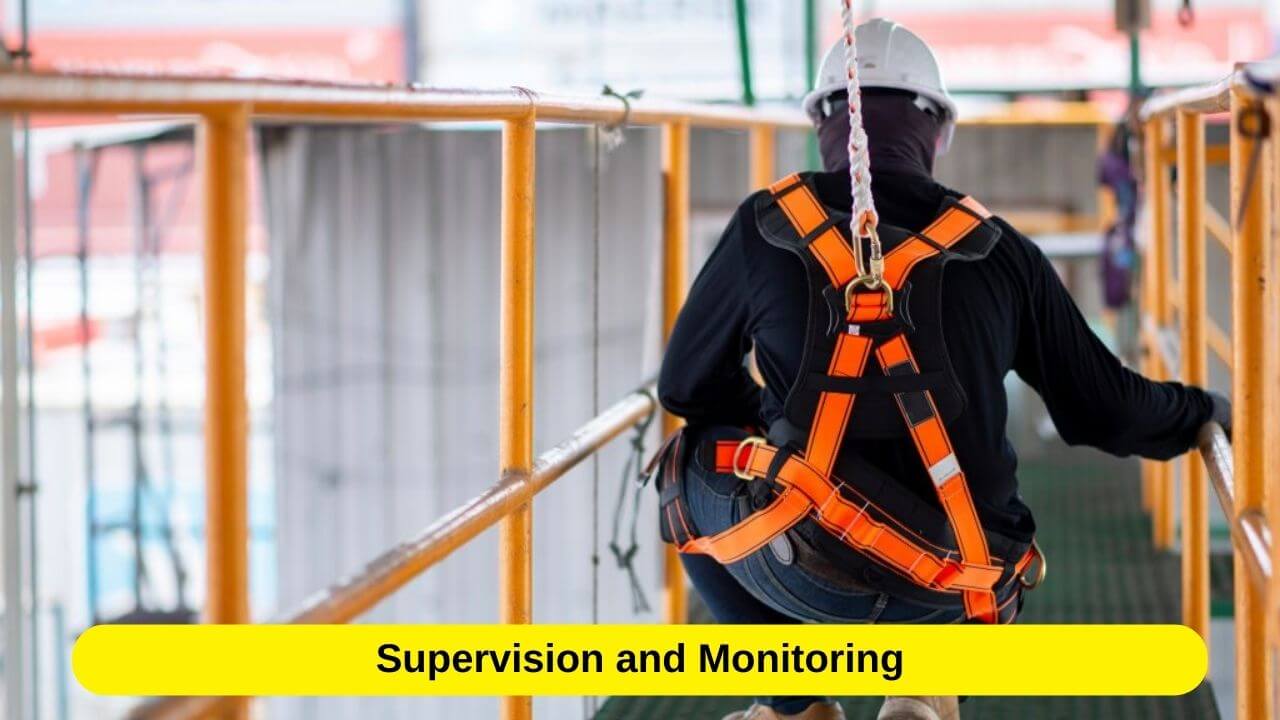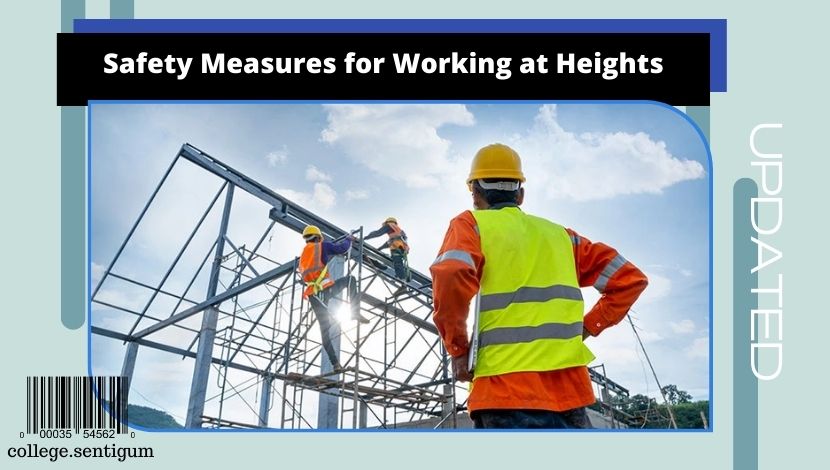Safety Measures for Working at Heights – Working at height refers to any task or activity that takes place above ground level, where there is a risk of falling and causing injury.
It involves working in elevated areas or on structures such as roofs, scaffolds, ladders, towers, platforms, or any other elevated surfaces.
Examples of jobs that typically involve working at heights include construction work, window cleaning, roof repairs, painting, installation of signage or lights, tree trimming, and maintenance of elevated equipment or machinery.
Working at height poses significant risks due to the potential for falls, which can result in severe injuries or even fatalities.
Therefore, it is crucial to implement proper safety measures, equipment, and training to minimize these risks and ensure the well-being of workers.
What Are the Most Common Causes of Accidents?

When working at height, several factors can contribute to accidents and incidents.
Here are some of the most common causes:
Lack of Fall Protection
Failure to use or inadequate implementation of fall protection systems, such as guardrails, safety harnesses, or safety nets, can significantly increase the risk of falls.
Improper Use of Equipment: Incorrect or unsafe use of equipment, such as ladders, scaffolding, or aerial lifts, can lead to accidents. This includes using equipment beyond its intended capacity, improper setup or installation, or failure to follow manufacturer guidelines.
Insufficient Training and Competence
Inadequate training and lack of competence in working at height procedures, hazard identification, or use of safety equipment can contribute to accidents.
Insufficient knowledge and skills increase the likelihood of errors or misjudgments.
Hazardous Working Conditions
Working in adverse weather conditions, poor lighting, or on unstable surfaces can create hazardous situations.
These conditions can affect stability, visibility, and overall safety, increasing the risk of accidents.
Falling Objects
Failure to secure tools, equipment, or materials properly can result in falling objects, posing a threat to workers below.
Neglecting to use tool lanyards, toe boards, or debris nets can contribute to incidents involving falling objects.
Inadequate Planning and Risk Assessment: Insufficient planning and failure to conduct thorough risk assessments before starting work can lead to overlooking potential hazards, inadequate safety measures, and poor coordination among workers.
Human Error and Lack of Awareness
Mistakes or lapses in judgment, distraction, fatigue, complacency, or disregard for safety procedures can all contribute to accidents. Lack of situational awareness and failure to follow established protocols can increase the likelihood of incidents.
Poor Communication and Coordination: Ineffective communication among workers, supervisors, or teams can result in misunderstandings, misinterpretations, or failure to convey critical safety information, leading to accidents or unsafe practices.
Inadequate Maintenance and Inspections: Lack of regular maintenance and inspections of equipment, such as harnesses, ladders, or scaffolding, can lead to malfunction or failure, increasing the risk of accidents.
Lack of Emergency Preparedness: Insufficient planning and preparation for emergency situations, including rescue procedures or evacuation plans, can hinder timely response and exacerbate the consequences of accidents.
It is crucial to identify these common causes of accidents when working at height and take proactive measures to mitigate them through comprehensive training, adherence to safety protocols, regular equipment maintenance, effective communication, and thorough risk assessments.
Read More: The Future of 3D Printing in Heavy Equipment Manufacturing
Safety Measures for Working at Heights

When working at heights, it is crucial to prioritize safety to prevent accidents and injuries.
Here are some essential safety measures to consider:
Risk Assessment
Before starting any work at heights, conduct a thorough risk assessment to identify potential hazards and take appropriate preventive measures.
Proper Training
Ensure that workers who will be working at heights are adequately trained in safety procedures, equipment usage, and emergency protocols.
Training should cover topics such as fall protection, equipment inspection, and rescue techniques.
Fall Protection Systems
Implement appropriate fall protection systems based on the nature of the work and height involved.
These may include guardrails, safety nets, personal fall arrest systems (PFAS), or work positioning systems.
Inspect Equipment
Regularly inspect and maintain all equipment used for working at heights, including ladders, scaffolds, harnesses, ropes, and anchors.
Follow manufacturer guidelines for inspection frequency and keep records of inspections.
Use of Proper Equipment
Ensure that workers have access to and utilize appropriate safety equipment, such as safety harnesses, helmets, non-slip footwear, and high-visibility clothing.
Secure Ladders and Scaffolds
When using ladders or scaffolding, ensure they are stable, properly erected, and secured.
Use ladders with non-slip feet and secure scaffolding to prevent tipping or collapsing.
Communication and Signage
Establish effective communication systems among workers to convey instructions, warnings, and emergency signals.
Display clear signage indicating height-related hazards, restricted areas, and safety procedures.
Weather Conditions
Consider the impact of weather conditions, such as high winds, rain, or snow, on working at heights.
Avoid working during adverse weather conditions that could compromise safety.
Tool and Equipment Handling
Properly secure tools, materials, and equipment to prevent them from falling or being knocked off ledges.
Use tool lanyards or tethers to keep them within reach and prevent dropping.
Emergency Preparedness
Develop emergency response plans specific to working at heights, including rescue procedures, evacuation routes, and communication protocols.
Conduct drills to ensure workers are familiar with emergency procedures.
Supervision and Monitoring

Assign competent supervisors or monitors to oversee work at heights, ensuring compliance with safety protocols, providing guidance, and promptly addressing any safety concerns.
Read More: 9 Tips of Choosing the Right Earthmoving Equipment
Remember, these are general safety measures, and specific regulations and guidelines may vary depending on the country, industry, and type of work being performed.
Always consult local safety regulations and seek professional advice to ensure compliance and maximize safety when working at heights.
Conclusion
In conclusion, fall protection measures are typically required when working at a height of 6 feet (1.8 meters) or higher above a lower level.
This height threshold serves as a general guideline for implementing safety measures to prevent falls and protect workers from injuries.
However, it’s important to consider specific regulations, industry standards, and task-specific requirements that may vary in different jurisdictions.
Always prioritize safety and consult local guidelines to determine the precise fall protection requirements for your specific work environment.
